22 Of The Most Important Photographs Ever Taken
Important Photographs ever taken remind us all of where humanity has come, they capture some of the most iconic people and moments of that time period. In today’s list we’ll be looking at 22 Of The Most Important Photographs Ever Taken, these feature some iconic photography of portraits, landscapes and important  landmarks.
The National Media Museum’s upcoming exhibition Drawn By Light: The Royal Photographic Society Collection – which was previously based at London’s Science Museum – is a selection of historically important photos taken from the Royal Photographic Society’s huge archive of over 250,000 images.

The exhibition charts the development of photography from the 1800s right through to the present day. It includes this haunting heliograph image called Un Clair de Lune (‘Moonlight’), which is considered to be the very first successful photograph. It was taken by French inventor Joseph Nicéphore Niépce who was born exactly 250 years ago on 7 March 1765.
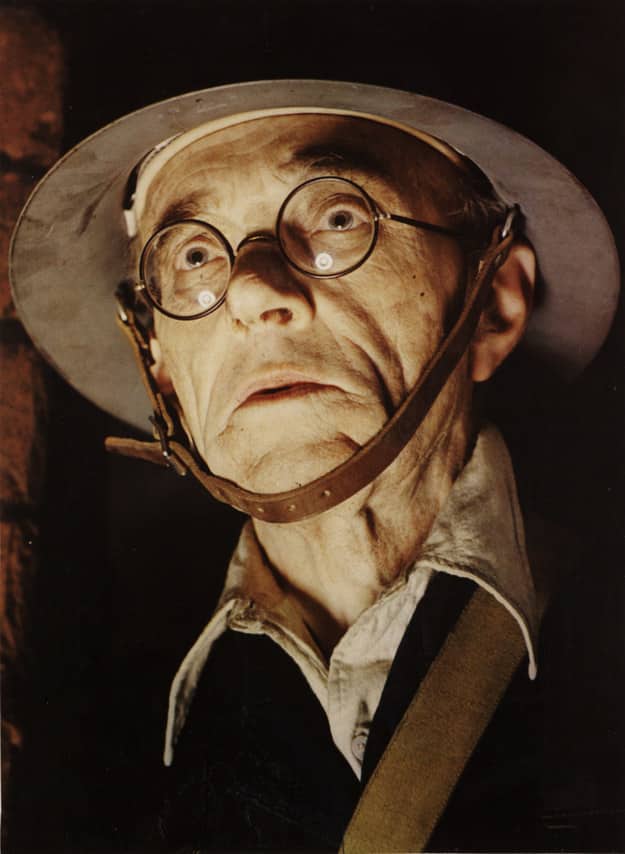
War photography also features prominently in the RPS selection. As well as this striking image of a London fire guard taken in 1944 by John Hinde, an early pioneer of colour photography, the exhibition also includes images from the Crimean War in 1855 right through to unfolding present day conflicts.
Here are 20 more incredible photos from the exhibition, which will run from 20 March- 1 June 2015 at the National Media Museum in Bradford.
1. Soldiers of the Sky, 1940, Nickolas Muray.
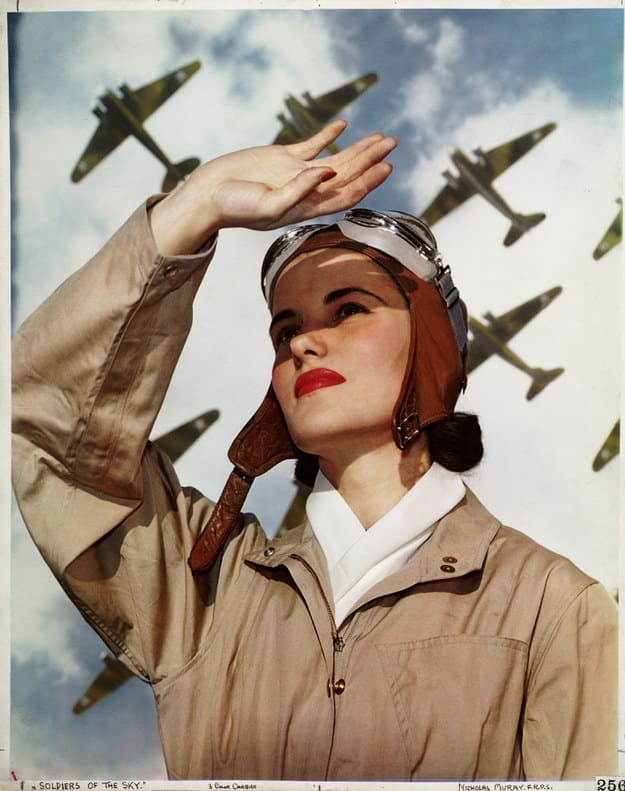
Nicolas Muray was a Hungarian born American portrait photographer and Olympic fencer who had a 10 year relationship with the artist Frida Kahlo. He produced this vibrant wartime propaganda image for Vogue.
2. Audrey Hepburn, 1950, Angus McBean.
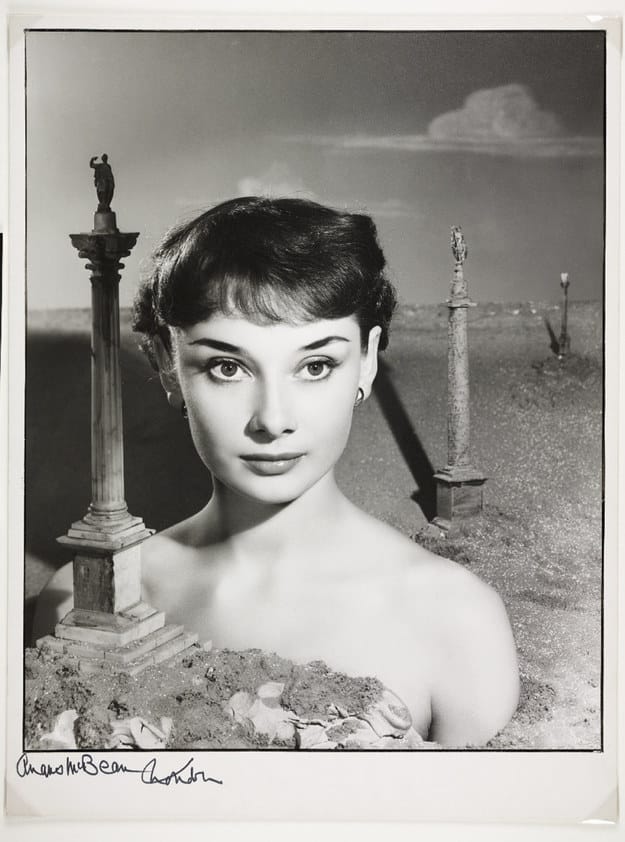
This surrealist image of Audrey Hepburn was taken by acclaimed British photographer Angus McBean, who was in the process of rebuilding his career after being sentenced to four years in prison for ‘homosexual acts’ during WWII.
3. Moonrise, Hernandez, New Mexico.
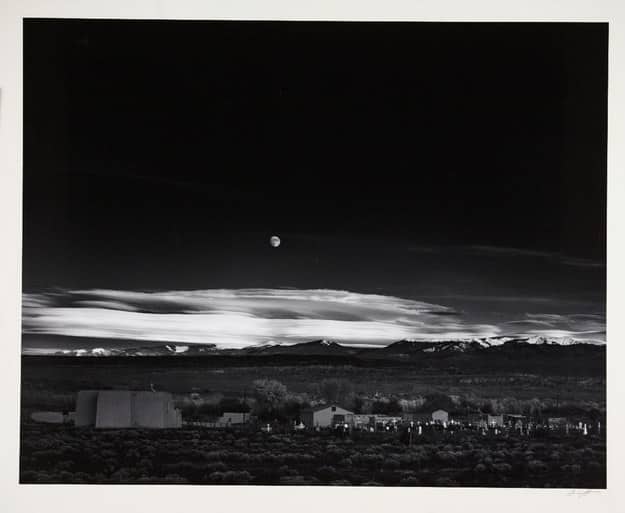
Ansel Adams was an ardent environmentalist who worked hard to ensure that his sweeping black and white shots of the American West perfectly captured the specific quality of the light that was falling on that location at a particular moment in time.
4. Fading Away, 1858, Henry Peach Robinson.
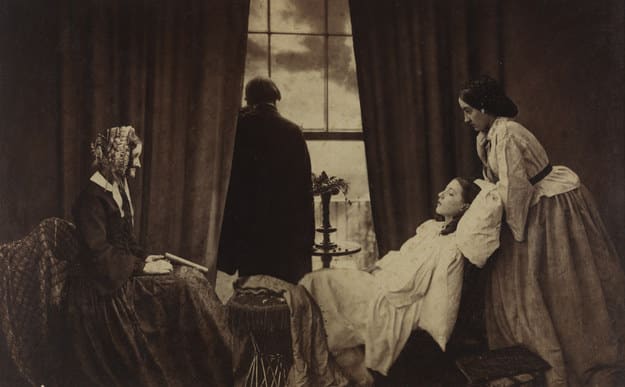
This sombre image of a young woman dying from consumption is actually a montage of five separate photographic images. Henry Peach Robinson was a member of the Pictorialist movement, which promoted photography as an art form.
5. Father and Sons Walking in the Face of a Dust Storm, 1936, Arthur Rothstein.
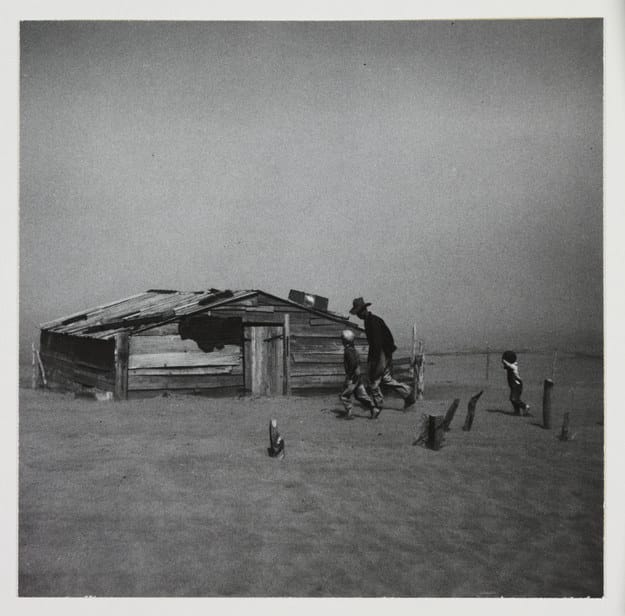
Arthur Rothstein was one of America’s most prominent photojournalists during the Great Depression (1929-39). The US government asked him to document the plight of farmers in the so-called ‘dust bowl’: prairie areas decimated by drought.
6. I Wait, 1872, Julia Margaret Cameron.
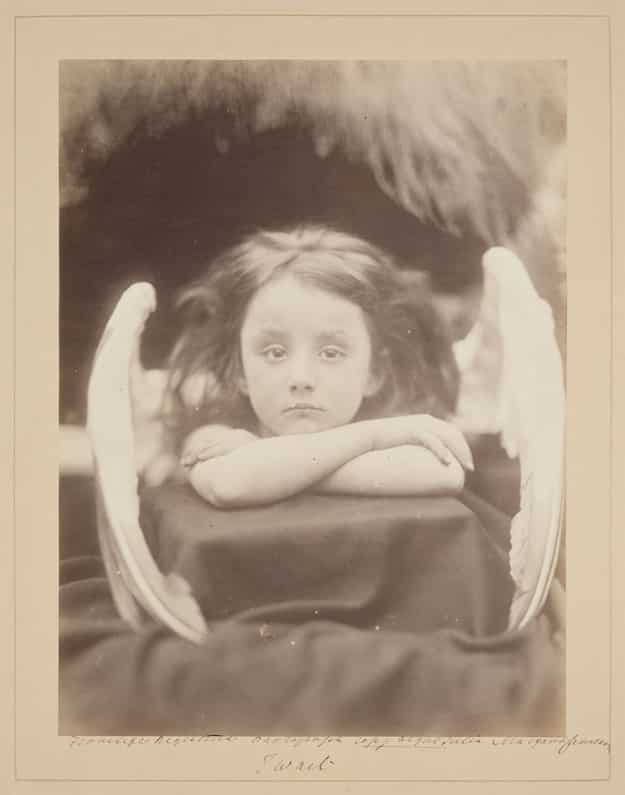
Julia Margaret Cameron was a British photographer who became famous for her portraits of celebrities. She took up photography at the relatively late age of 48 and worked in a converted chicken shed in her back garden. This beautiful image shows her niece Rachel Gurney wearing a pair of swan’s wings.
7. New Orleans Street Singers, 1971, Tony Ray-Jones.
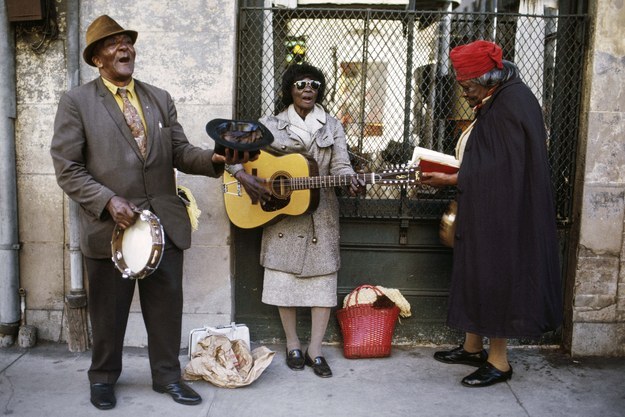
Tony Ray-Jones was an extremely talented British photojournalist whose career was tragically cut short when he died of leukaemia aged just 30. This colourful New Orleans street scene was one of the last photographs he ever took.
8. The Hippopotamus at the Zoological Gardens, 1852, Juan Carlos Maria Isidro, Count de Montizon de Borbon.
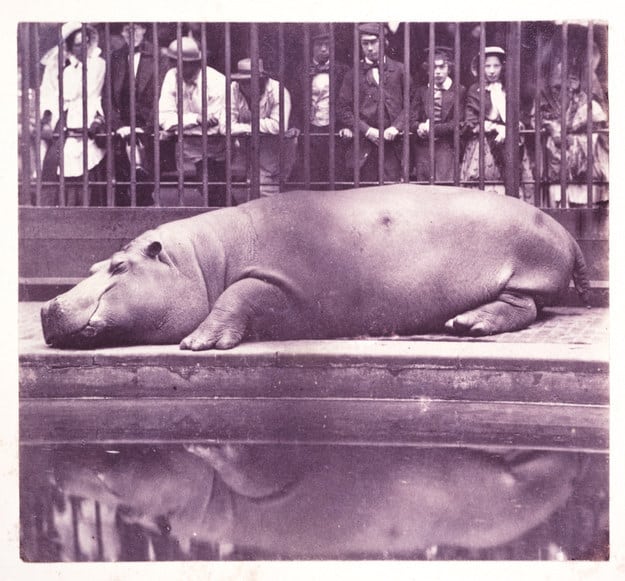
This snapshot of a relaxed hippopotamus in London Zoo is probably the first photograph of a hippo ever taken. The photographer was a nephew of King Ferdinand VII and one of the founder members of the Royal Photographic Society.
9. Chimney, c. 1934, Noel Griggs.
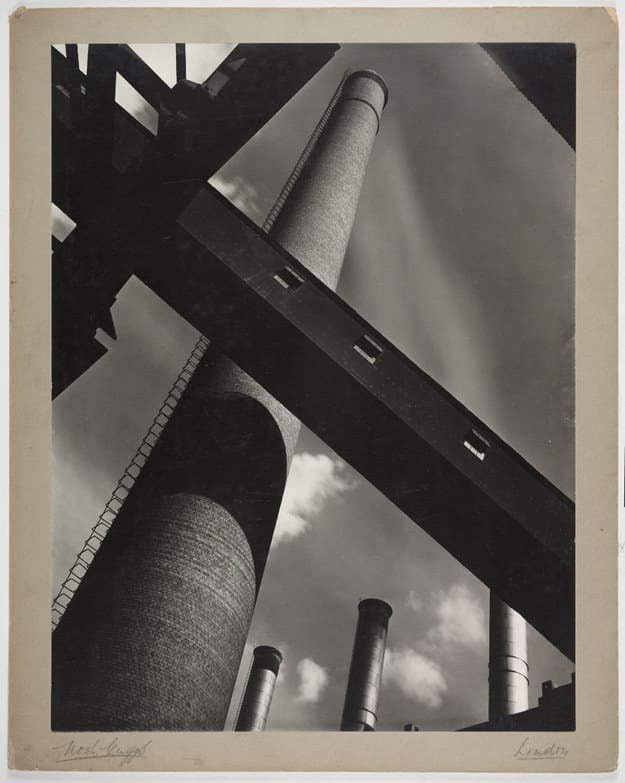
This striking image by British photographer Noel Griggs was one of the first modernist attempts to show the beauty of industrial architecture.
10. Larry Burrows on assignment in Vietnam c. 1971, photographer unknown.
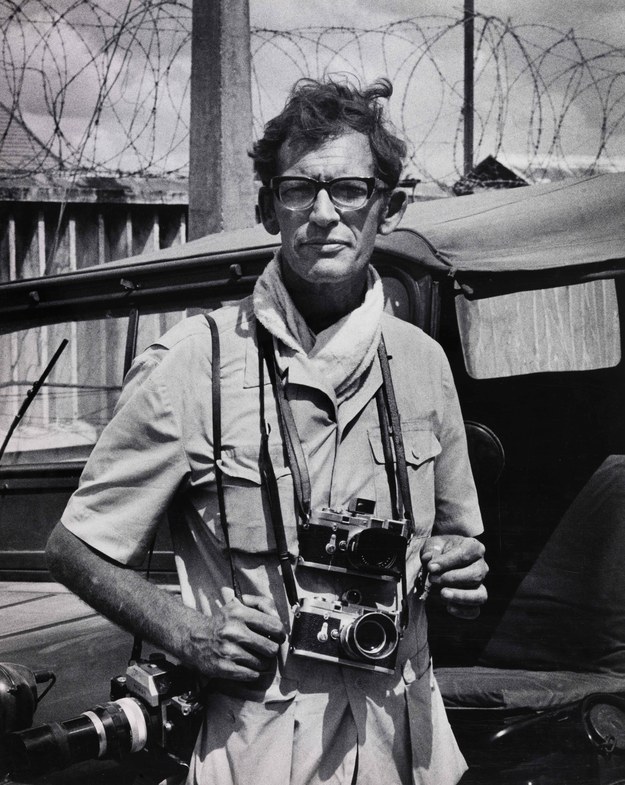
Larry Burrows was a British photojournalist best known for his searing and confrontational coverage of the Vietnam War. This is one of the last photographs of him ever taken: he died in 1971 when his helicopter was shot down over Laos.
11. Leicester Square, 1896, Paul Martin.
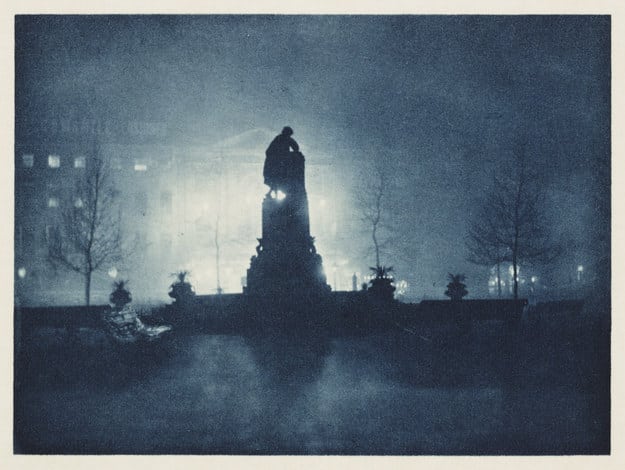
This striking shot is one of the earliest examples of night time photography. It was taken by Paul Martin, a Victorian photographer best known for his candid snapshots of the hustle and bustle of everyday London life.
12. Refugees from East Pakistan on the Indian Border, 1971, Don McCullin.
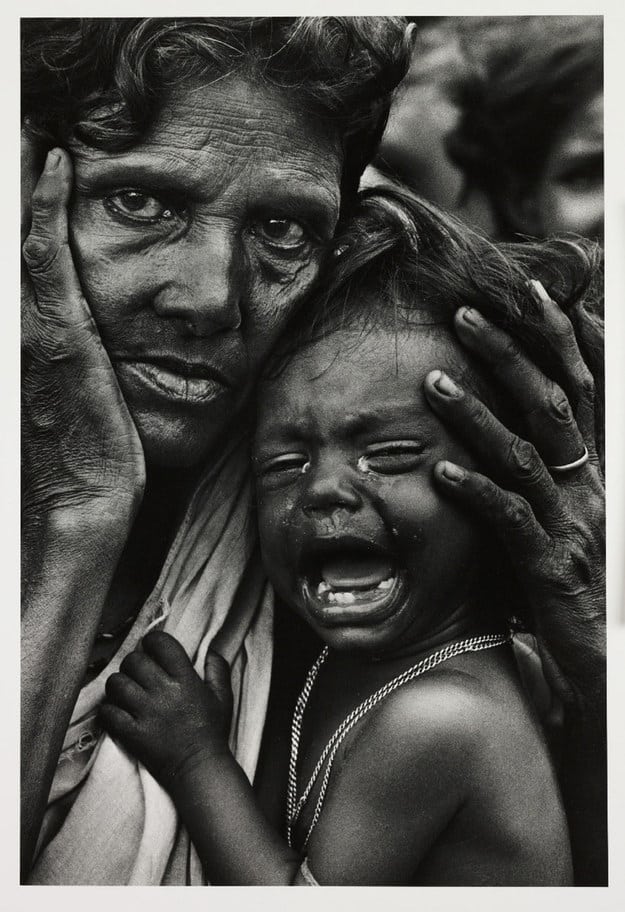
Don McCullin is an internationally renowned British photojournalist. He took this haunting image while documenting the harrowing Bangladesh Liberation War for the Sunday Times Magazine in 1971.
13. Portrait of Christina, 1913, Lieutenant Colonel Mervyn O’Gorman.
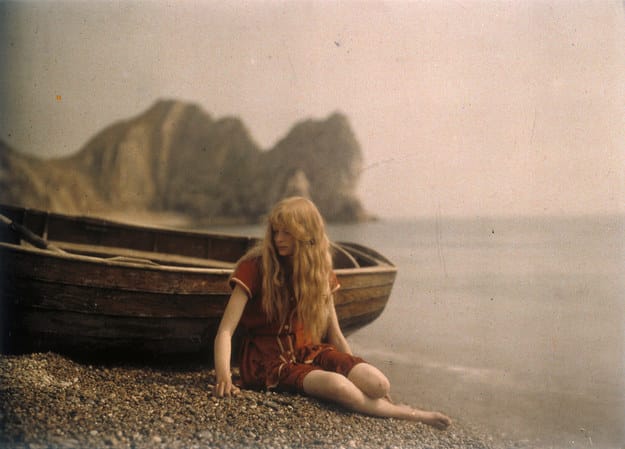
This beautiful image is one of the earliest examples of colour photography. It was created using the Autochrome process, which used dyed grains of potato starch as colour filters. These plates needed a very long exposure time so Autochrome images of living people- like this shot of Christina- are very rare.
14. The Valley of the Shadow of Death, 1855, Roger Fenton.
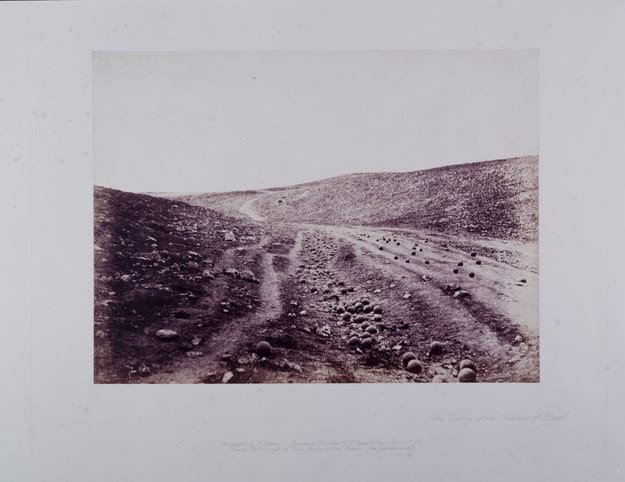
No, those aren’t oddly shaped rocks: the round stones in this image by pioneering British photographer Roger Fenton are actually cannonballs that were fired at British troops by Russian forces during the Crimean War.
15. Limbs and the Law, 1924, James Jarché.
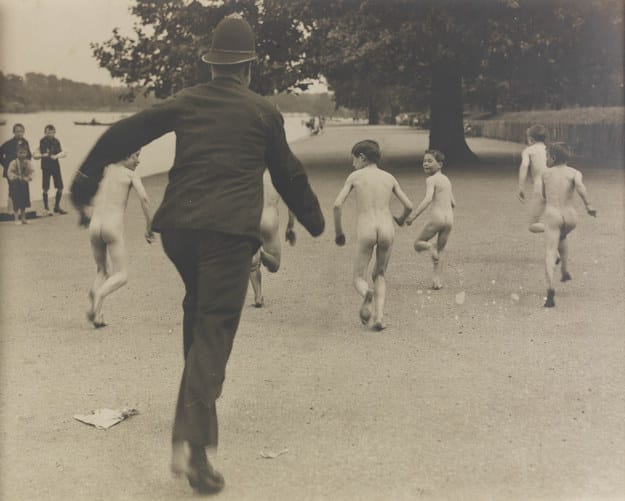
‘Jimmy’ Jarché was a press photographer who documented London life for the Daily Sketch tabloid, which merged with the Daily Mail in 1971. This famous Jarché shot shows a group of young boys running away from a policeman after he caught them swimming naked in Hyde Park.
16. Nude on Sand – Oceano, California, 1936, Edward Weston.
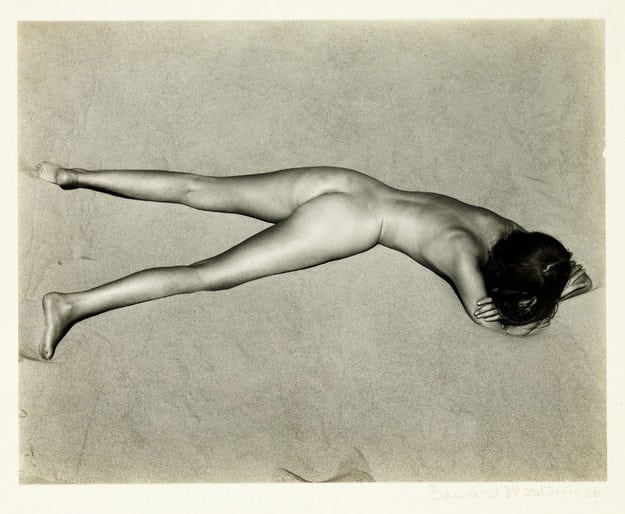
Edward Weston felt his photographs exposed the essential nature of his subjects. By taking carefully composed photographs like the one above, he aimed to reveal ‘the greater mystery of things more clearly than the eyes can see’.
17. Queen Victoria, c.1856, Roger Fenton.
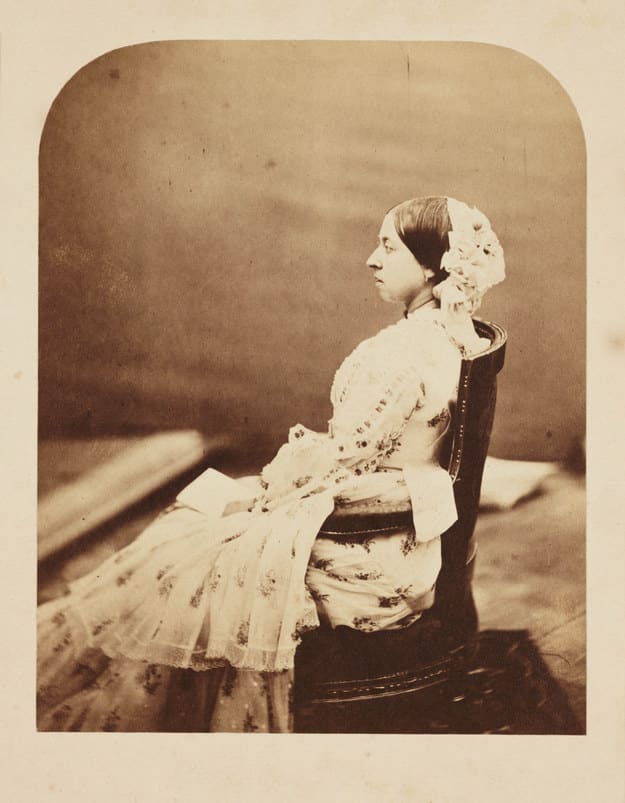
Crimean War photographer Roger Fenton also turned his eye – and lens – to portrait photography, as we can see here. Queen Victoria was one of the first royal photography buffs and would happily pose for pictures.
18. The Bleached Skull of a Steer on the Dry Sun-Baked Earth of the South Dakota Badlands, 1936, Arthur Rothstein.
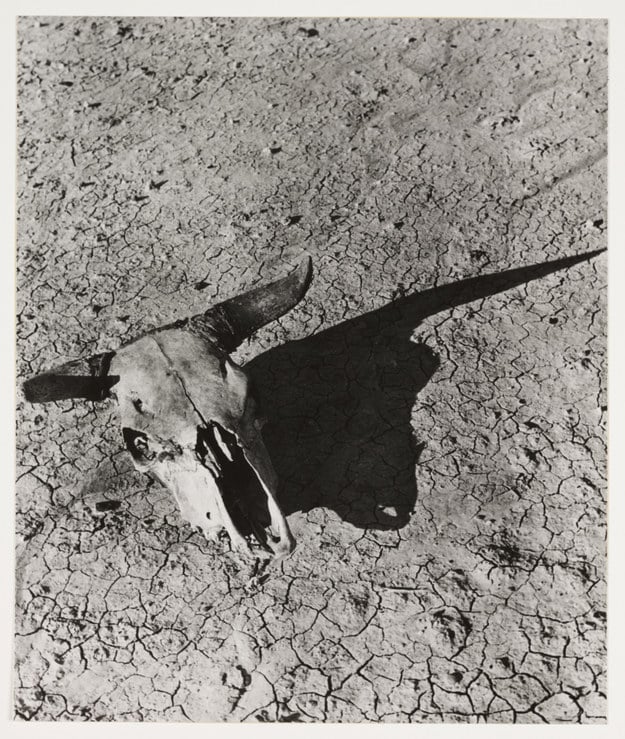
If you were in any doubt about the extent of the ‘dust bowl’ droughts, this photograph should dispel them. This resonant image by Arthur Rothstein shows the remains of just one of the millions of livestock that died during the Depression.
19. The Gate of Goodbye, 1917, Francis James Mortimer.
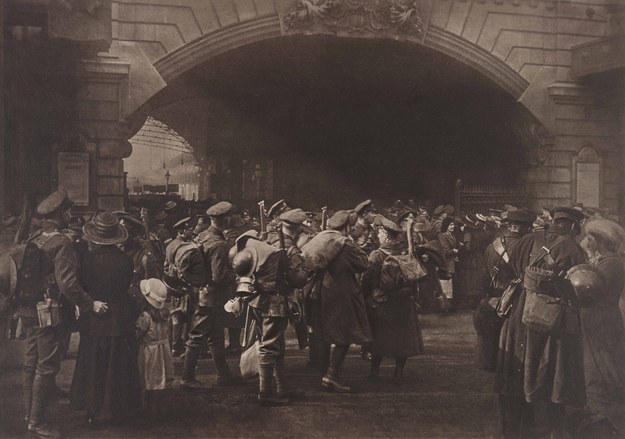
Like ‘Fading Away’ above, this photograph is actually a composite created from over 20 original negatives. It shows trench-bound soldiers saying goodbye to their families at London’s Victoria Station during the First World War.
20. Afghan Girl, Pakistan, 1984, Steve McCurry.
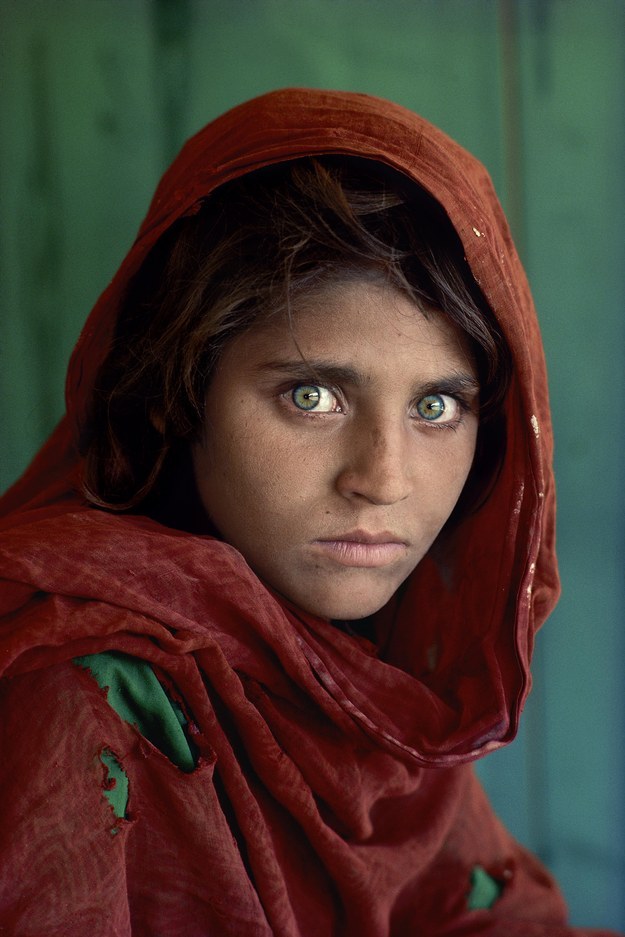
This iconic photograph of an Afghan refugee child called Sharbat Gula featured on the cover of National Geographic’s June 1985 issue. In 2002 photographer Steve McCurry traveled to Pakistan to find her. When he did, she told him that she still didn’t feel safe. “Have you ever felt safe?†he asked. â€No,†she replied.
Via BuzzFeed



